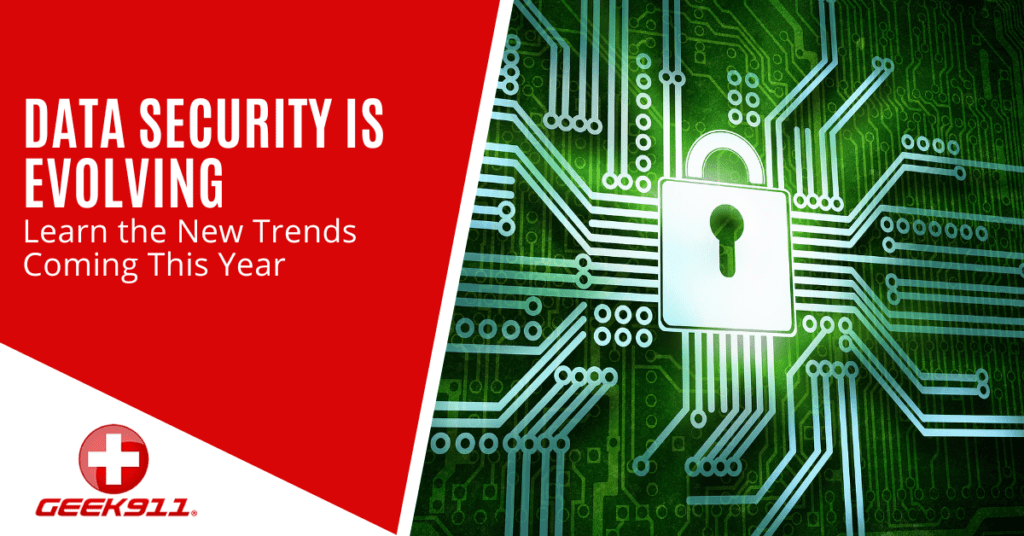Data Security Is Evolving. Learn the New Trends Coming This Year

Data security is more important now than ever. With cyber threats evolving rapidly, it’s crucial for individuals and organizations to stay ahead of the curve. As we delve into the new year, 2024, it’s essential to explore the emerging trends shaping the landscape of data security.
From advancements in encryption technologies to the rise of AI-driven security measures, the realm of data protection is undergoing significant transformations. In this article, we’ll dissect the latest trends in data security and examine how they are poised to shape the future.
Enhanced Encryption Protocols
Quantum-Safe Encryption
One of the most notable advancements in data security is the development of quantum-safe encryption protocols. With the advent of quantum computing on the horizon, traditional encryption methods face the risk of being compromised.
Quantum-safe encryption algorithms, such as lattice-based cryptography and hash-based signatures, are designed to withstand attacks from quantum computers. As organizations prepare for the quantum era, implementing quantum-safe encryption measures is becoming increasingly imperative to safeguard sensitive data.
Homomorphic Encryption
Homomorphic encryption is another area garnering attention in the realm of data security. Unlike traditional encryption methods, which require decryption for data processing, homomorphic encryption allows computations to be performed directly on encrypted data.
This revolutionary approach ensures privacy and security throughout the data processing pipeline, making it ideal for applications in cloud computing and data analytics. As businesses seek to leverage the power of data while preserving confidentiality, homomorphic encryption presents a promising solution.
Zero Trust Architecture
Shift from Perimeter-Based Security
The traditional perimeter-based security model, which relies on the notion of trust within the network perimeter, is proving inadequate in today’s dynamic threat landscape. Zero Trust Architecture (ZTA) challenges this paradigm by assuming zero trust, even among internal entities.
By implementing strict access controls and continuous authentication mechanisms, ZTA ensures that every access request is rigorously validated, regardless of the user’s location or device. This proactive approach minimizes the risk of unauthorized access and lateral movement within the network, thereby enhancing overall security posture.
Microsegmentation
Microsegmentation is a key component of Zero Trust Architecture, enabling organizations to divide their network into smaller, isolated segments based on workload characteristics and security requirements. By implementing granular access controls at the segment level, organizations can contain breaches and prevent attackers from moving laterally across the network. With the proliferation of cloud environments and hybrid infrastructures, microsegmentation has emerged as a vital strategy for enforcing Zero Trust principles and safeguarding critical assets.
AI-Powered Threat Detection
Behavioral Analytics
Traditional signature-based approaches to threat detection are no longer sufficient to combat sophisticated cyber threats. As adversaries employ advanced evasion techniques and polymorphic malware, detecting anomalous behavior patterns is becoming increasingly challenging. AI-powered behavioral analytics leverage machine learning algorithms to analyze vast amounts of data and identify deviations from normal behavior. By correlating disparate data sources and detecting subtle indicators of compromise, AI-driven threat detection systems can thwart emerging threats in real-time, thereby bolstering cyber resilience.
Predictive Intelligence
Predictive intelligence is revolutionizing the way organizations anticipate and mitigate cyber threats. By harnessing the power of AI and predictive analytics, security teams can proactively identify potential vulnerabilities and prioritize remediation efforts accordingly.
Whether it’s predicting future attack vectors or forecasting malware trends, predictive intelligence empowers organizations to stay one step ahead of cyber adversaries. By embracing a proactive stance towards cybersecurity, businesses can minimize the impact of security incidents and protect their digital assets effectively.
Stay Ahead of New Trends
As we navigate the ever-evolving threat landscape, staying abreast of the latest trends in data security is imperative. From quantum-safe encryption to Zero Trust Architecture and AI-powered threat detection, organizations must embrace innovative approaches to safeguard their sensitive data. By leveraging advanced technologies and adopting a proactive mindset, we can mitigate the risks posed by cyber threats and ensure a secure digital future.
For tailored data security solutions tailored to your organization’s needs, contact GEEK911 today. We are committed to helping you navigate the complexities of cybersecurity and protect what matters most.
